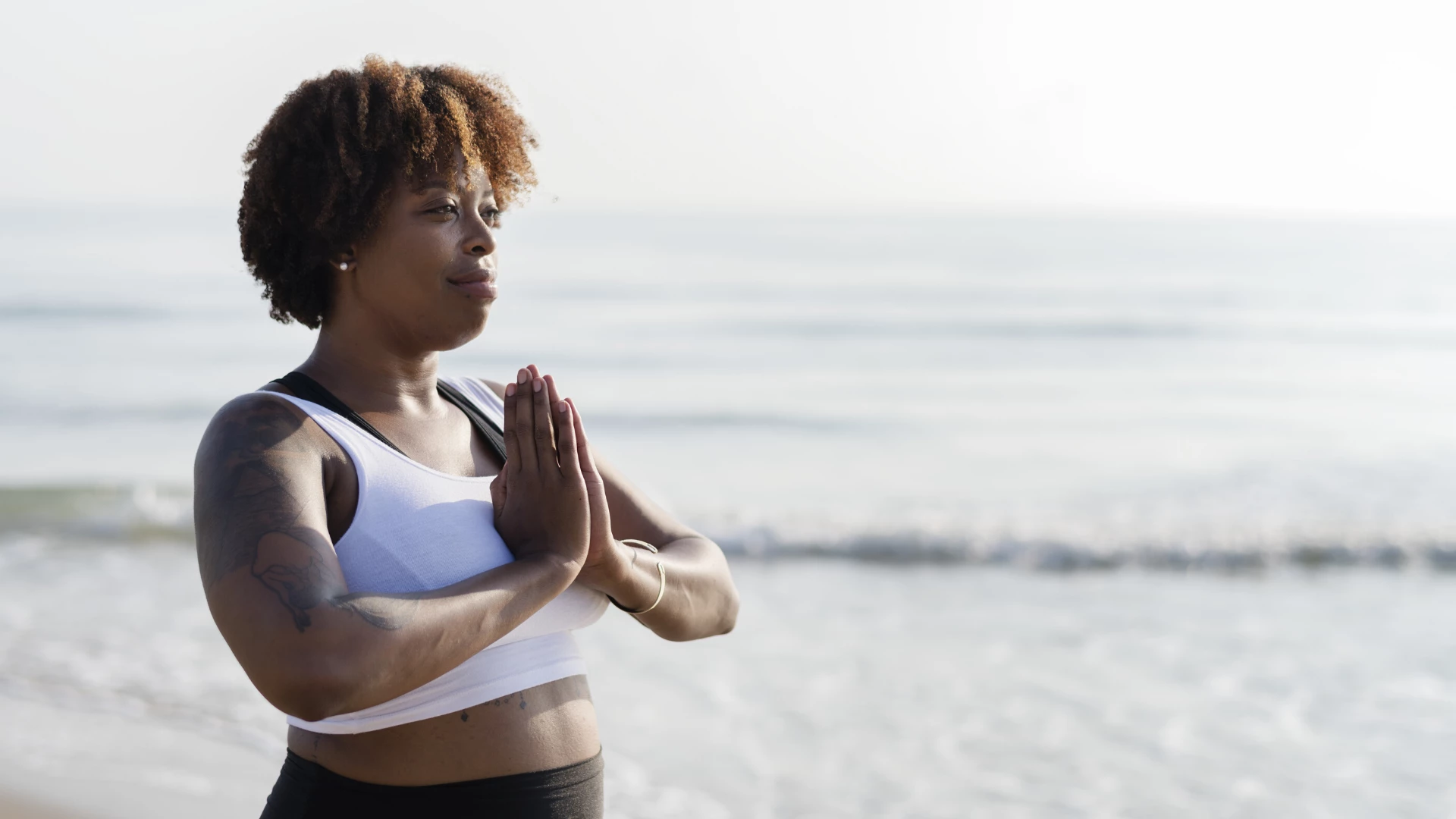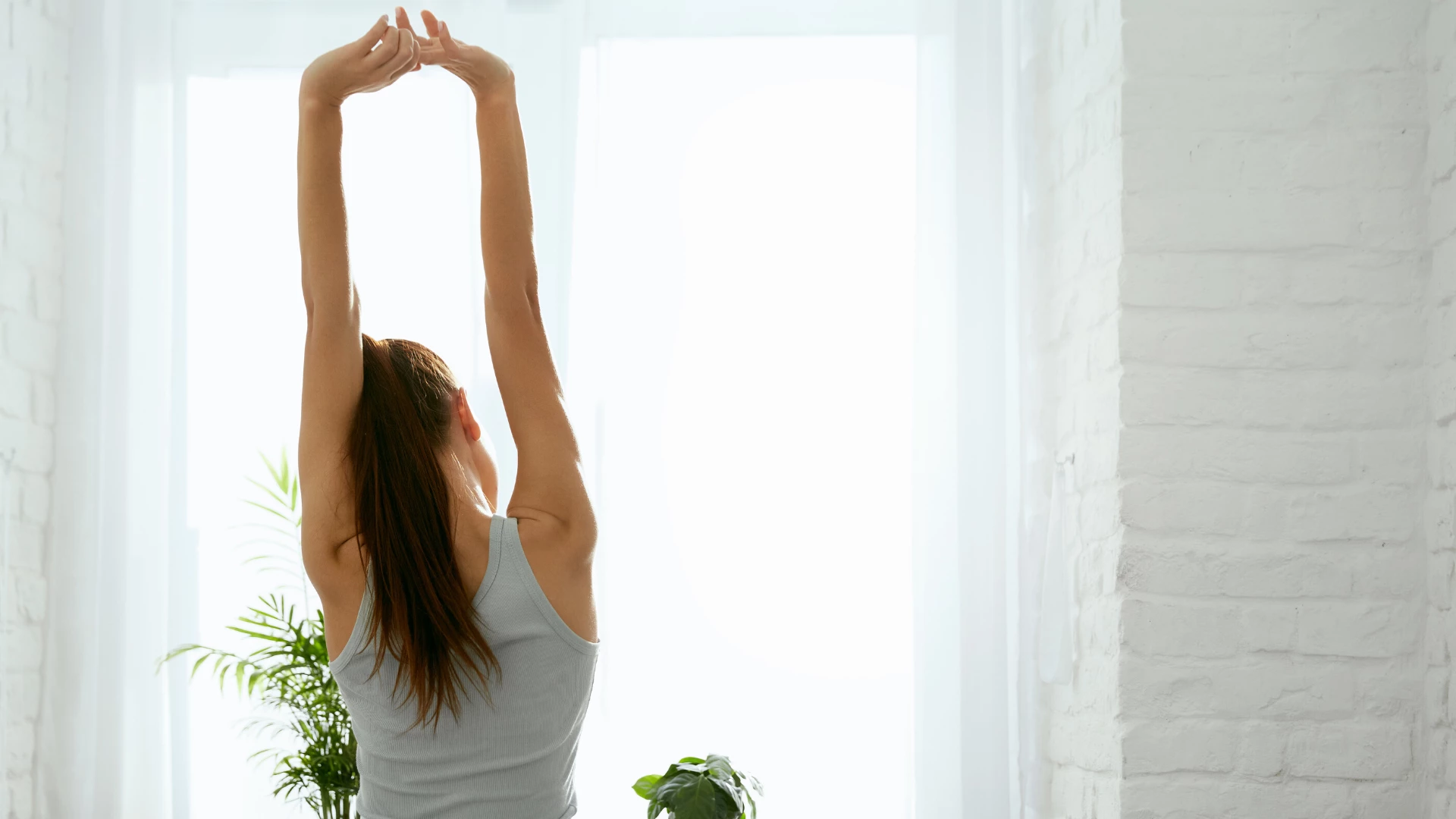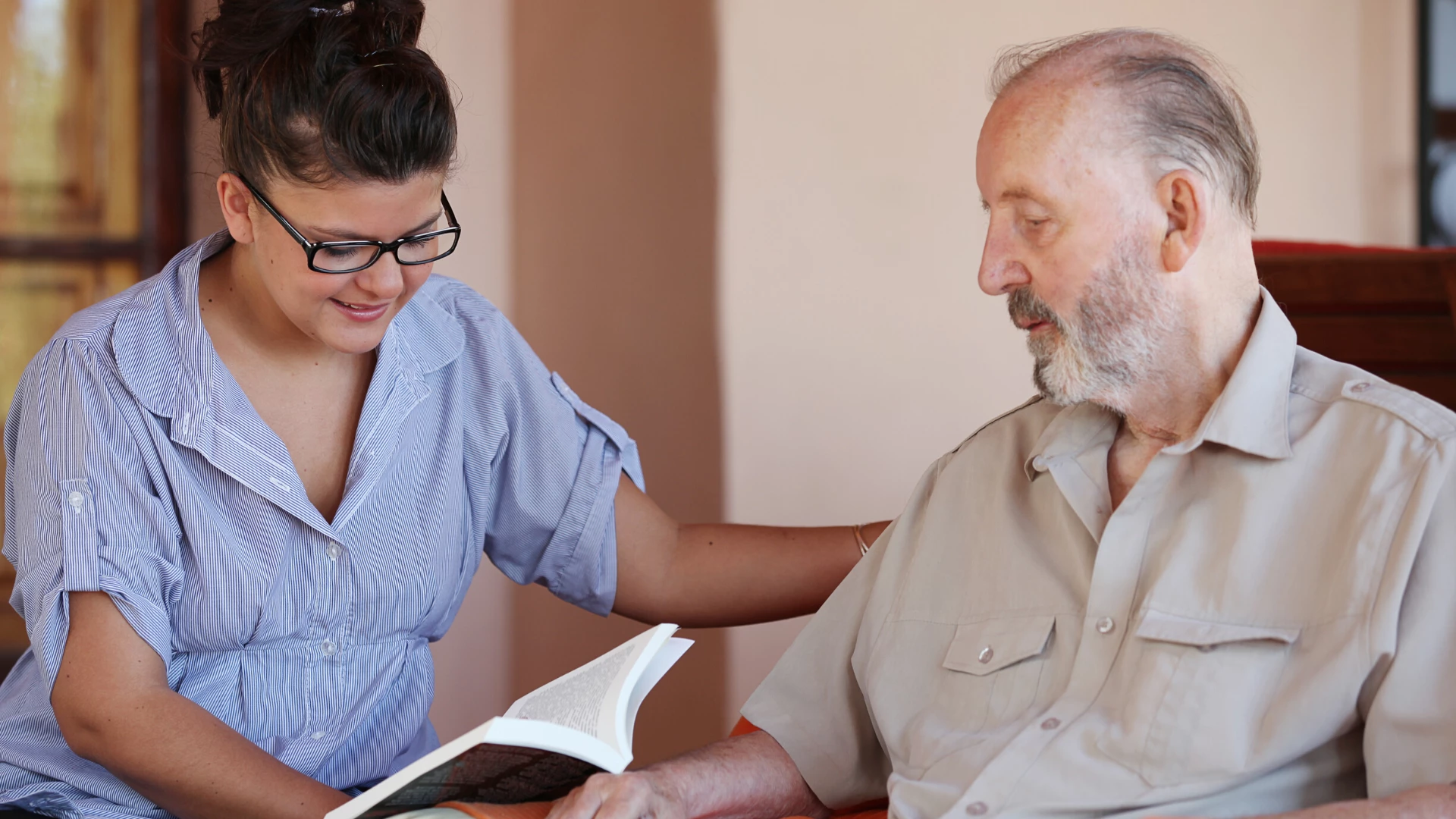4 Ways to Fit Yoga into Your Day—No Leggings Required

As a yoga instructor and practitioner, I can see that for many people, one of the biggest obstacles to maintaining a consistent yoga practice is lack of time.
Add up all the pieces of getting to a yoga class—traveling, getting changed, taking the class, chatting with instructors and fellow practitioners, getting changed again, traveling again—and formal practice can take a big chunk out of your day. For many in the modern world who struggle to have time for various commitments with work, family, and personal interests, the idea of taking that chunk out of the day is just about laughable.
Yet a great thing about yoga is actually how easy and convenient it can be to practice in tiny bits. Practicing yoga can happen when getting out of bed, washing dishes, doing yard work, or working at your desk. Expanding our view of yoga beyond asana, only one of yoga’s eight limbs, makes intermittent daily practice all the more possible. Let’s take a look at four quick, easy ways to incorporate yoga into your day.
1. Stretch and Movement
Asana offers the body stretch, movement, strengthening, and more. Poses and movements don’t have to be as complex and rigorous as arm balances, handstands, or deep-standing poses to offer those benefits. Let’s look at some quick, easy movements and stretches to fit in little pockets of your day.

1.Wake-up stretch and grounding: When your feet hit the ground the first time in the day, take an easy Tadasana (Mountain Pose).
- Interlace your fingers and turn your palms downward.
- Bring your arms forward and up so that your palms then face upward.
- Then, stretch up and over to the right, breathing length into both sides of your body.
- Hold for 5 to 10 breaths, and then reach up and over and take the same on the other side.
2. Neck release at work: Take a few moments during your work day, right at your desk, to release tension and get the blood flowing with easy movement and stretch.
- Start by rolling your neck from one ear to the other, going down and up towards the other ear, like the pendulum of a grandfather clock.
- Then, drop your chin to your chest and interlace your fingers behind your neck at the base of your hairline. The weight of your head, hands, and arms can encourage a gentle stretch for the back of your neck.
- Raise your chin back up, soften your gaze, and breathe fluidly.
2. Yoga Breathwork
Breathing exercises, or pranayama (translated roughly from Sanskrit as “life-force control”), have innumerable health benefits. Good news: it can be done almost anywhere, and can take less than a minute! 
1. Morning or evening Dirga breath: This breathing pattern is simple but effective. It can be done sitting, standing, or even lying down. It can help focus your energy in the morning and calm your racing mind in preparation for sleep in the evening.
- Directing your breath into your pelvic floor, breathe in up to your navel and hold for a few seconds.
- Then breathe in up to middle ribs and hold for a few seconds.
- Then breathe up as high as you can and hold for a few seconds.
- Finally, exhale it all out.
- Repeat this 5 to 10 times and then breathe normally. Notice the effects on your body and mind.
2. Anytime ujjayi breath: Ujjayi translates (approximately) from Sanskrit as “ocean-sounding breath.” It’s a common breath used in asana practice because it’s adjustable to different speeds, ratios of inhalations to exhalations, depths, and more. If you’re feeling in need of a mental, spiritual, or physical change at any point in the day, this breath can be adjusted to help you find what you need. Here are some ideas:
- Make your inhalations longer than your exhalations if you need more energy, and your exhalations longer than your inhalations if you need calming and grounding.
- If you feel scatterbrained, focus on the rhythm of this audible breath, away from what might be distracting you.
- If you feel overwhelmed, take a moment and practice this breath as a short meditation to help clear your mind and reground yourself.
3. Yoga is also Selfless Service
Seva, or selfless service, is a yogic practice of giving of yourself and not expecting anything in return. This can be quicker and easier than you might expect!

1. Be truly present with someone who needs it: Put down your phone and make eye contact. Show you care by attempting to understand how this person thinks and feels. Five minutes of your undivided attention can mean more than you may realize. You could say something in response that helps this person see an issue in a new way and perhaps see a better solution. Even more fundamental, you may help the person feel more seen and heard.
2. Call, text, or email someone you care about but haven’t had contact with in some time: “Just because I was thinking of you. I hope you’re well!” you could say. Who doesn’t smile when receiving a message like that? It could lead to meeting in real person (as humans have done for millennia!). Even if not, you could have turned around someone’s day for the better. Done with a conscious and caring approach, that’s yoga! And it can take less than a minute. How much quicker and easier could it get?
4. Mindfulness Every Day
Some might argue that yoga is a means to this end—to be more present in every moment, in body, mind, and spirit. Even apart from the other seven limbs, modern Western psychology, and other mind-body approaches are joining with yoga to offer convenient, widely accessible tools for working toward mindfulness. In an age of overstimulation from electronic devices, this is a very welcome development. Here are a couple of those tools to try!

1. Color visualization:
- Get comfortable—ideally sitting up tall, but this can be done lying or standing.
- Build a deep, steady breath. Close your eyes, as long as that’s comfortable for you.
- Picture a ball of a color that keeps you energized at your heart center.
- Imagine that ball growing to expand out through your torso, pelvis, shoulders, legs, arms, toes, fingers, neck, face, and head.
- Take 5 breaths, feeling that color all throughout you.
- Then do the same process with a color that makes you feel calm, that color layering on top of the first color.
- Remain with this feeling of calm energizing for as long as you are able before you must move on with your day.
2. Mantra meditation:
- Follow the steps above on your physical placement/feeling, breath, and gaze.
- Choose a simple word or phrase, such as “peace” or “I am enough.”
- Keep repeating the word or phrase. You might see it, or hear it in your mind, or both. You may see things you associate with the word or phrase in your mind.
- If those images, or anything else, pull your attention elsewhere, do your best not to get frustrated or judgmental of yourself. Come back to the mantra.
- Practice the mantra meditation for as long as possible. If you can do it for 30 seconds, do that. Next time, try for a minute. Even that minute of something as simple as this form of meditation is a yoga practice that can make quite a meaningful difference.
Also, read...
Change Your Perspective of Pelvic Tilting: How the Transversus Abdominis Can Help
4 Ways to Practice Locust Pose
5 Keys to Healthy Neck Alignment in Cobra Pose (Bhujangasana)
Related courses
Breath as Medicine: Yogic Breathing for Vital Aging
Yoga and Myofascial Release: Releasing Chronic Tension with the Bodymind Ballwork Method
Yoga and Detoxification: Tips for Stimulating Lymphatic Health

Kathryn Boland is an RCYT and R-DMT (Registered Dance/Movement Therapist). She is originally from Rhode Island, attended The George Washington University (Washington, DC) for an undergraduate degree in Dance (where she first encountered yoga), and Lesley University for an MA in Clinical Mental Health Counseling, Expressive Therapies: Dance/Movement Therapy. She has taught yoga to diverse populations in varied locations. As a dancer, she has always loved to keep moving and flowing in practicing more active Vinyasa-style forms. Her interests have recently evolved to include Yin and therapeutic yoga, and aligning those forms with Laban Movement Analysis to serve the needs of various groups (such as Alzheimer’s Disease patients, children diagnosed with ADHD, PTSD-afflicted veterans – all of which are demographically expanding). She believes in finding the opportunity within every adversity, and doing all that she can to help others live with a bit more breath and flow!



